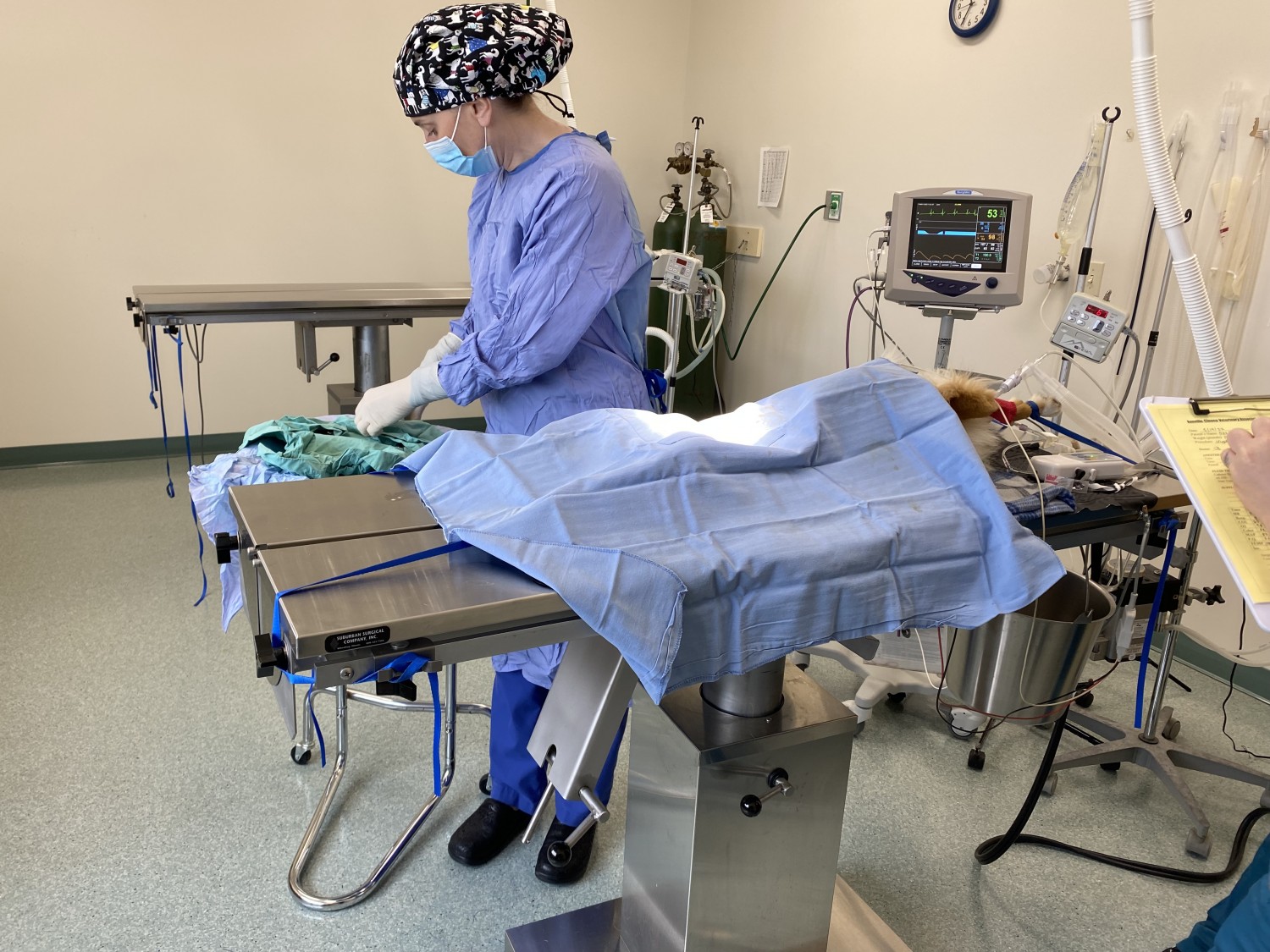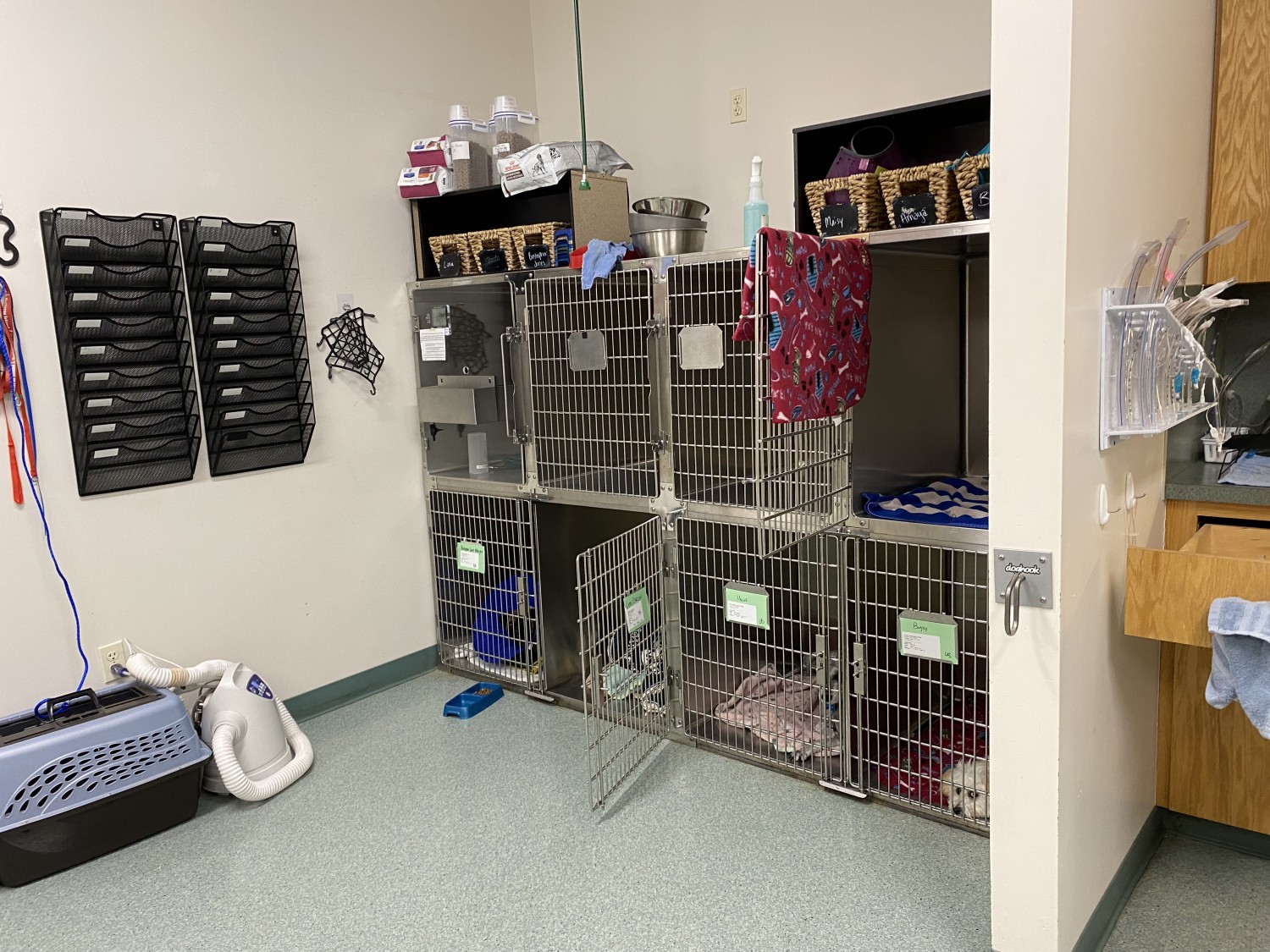|
We like to schedule your pet with the Dr. that is most familiar with them, or depending on the procedure being performed. An up-to-date exam and a preoperative blood work panel within 6 months of the scheduled surgery.
Our surgeries are outpatient, meaning that your pet will come in and go home the same day of surgery, with the exception of cat declaws, or select special situations. Pets should be fasted the night before surgery, to ensure safety during anesthesia. A technician is monitoring your pets’ vital signs before, during, and after their procedure; we want to ensure that your pet is comfortable until they are back in your arms!
We will schedule for you to bring your pet in between 7-8 AM in most cases, and we ask that you give us 10-20 minutes of your time to go over our hospitalization forms and treatment plans for the day. The Dr. will be in contact with you at the end of their surgery day to notify you that surgery went well.

What’s Happening While My Pet is in Your Care?
We have a variety of cage/run sizes to accommodate all of our patients while they are hospitalized. They are all lined with blankets and towels to create a comfortable space for them. All patients are labeled with their names and CPR decisions that you give us during intake. Routinely, your pet will be sedated intramuscularly, and kept within eyesight and reach of our surgery technicians. Once they are sleepy enough, we may place an intravenous catheter, for easy access to the bloodstream for routine, and emergency, medication administration. Your pet is sent into different stages of anesthesia as the process furthers. An endotracheal tube is placed into the esophagus for proper gas anesthesia, and to allow us to “breathe” for our patients. Once they are in the surgery suite, ECG monitor, pulse oximeter, blood pressure cuff, temperature probe, and carbon dioxide/respiration monitor are placed for vital readings throughout the procedure. We want our patients under anesthesia as little as possible while maintaining comfort, so once the surgeon is finished, the recovery period begins. Recovery is done by a certified veterinary technician, meaning that they will monitor your pet until autonomic body function restores. A treatment technician is responsible for tracking and documenting all that is done for your pet before and after surgery, so they always have a watching eye on them.

What Do I Do When My Pet Comes Home?
Anesthesia can take many hours to fully metabolize and leave your pet’s system, so please ensure that they have a safe and comfortable place to recuperate after surgery. If your pet goes home with medication, it is best to follow the instructions given by the Dr. and technician for optimum healing. If your pet needs an e-collar (or, cone of shame) after surgery, we will send you home with one. If you want to try an alternative, Surgi-Suits or Donut/Cloud Collars may be acceptable incision protection alternatives. We ask that you give your pet at least 2 weeks of post-operative care for most procedures. No harsh activity, or water activity, should be performed during the 2 weeks of recovery.
Surgery FAQ’s
My pet hasn’t pooped yet, is this normal?
- Anesthesia can slow down all of your pet’s bodily functions temporarily, so it may be up to 3 days before your pet has a regular bowel movement.
Do they have to wear the e-collar?
- We highly recommend that your pet wear some form of protection for at least 2 weeks after surgery. Protection may include an e-collar (cone of shame), donut/cloud collar, or surgi-suit.
|